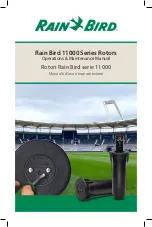
3: Conduit Tubing
3.1 Conduit Tubing Layout
Before any system can be installed or hooked up, the first step is to install
conduit tubing to protect the wiring. This step should be at the same time the
building is under construction, as it will be difficult to install the tubing once the
building has been completed. Here are the basic guidelines for selecting and
installing the tubing:
a.
The vertical extensions (to the individual room stations), must all have
one 6C, one 3C/2V (RG58U), and one AC cable, so conduit tubing of
appropriate diameter should be selected.
b.
The horizontal wiring should consist of the following:
for less than 20 units
one 6C, one 3C/2V, and one AC
for 20 ~ 60 units
one 6C, two 3C/2V, and one AC
60 ~ 150 units
one 6C, three 3C/2V, and one AC
We suggest using two separate conduits for the power and signal lines,
however in some areas the placement of power lines is governed by
certain regulations. Therefore, please check with local regulations before
deciding on a final placement.
3.2 Conduit Tubing Tips
a. While metal tubing of any kind is the most desirable material to
Use for housing the wiring, PVC piping is also a suitable material.
b. When selecting a location for the wiring, avoid running the wires
parallel to power lines of any kind, as they may cause interference
with the system.
c. Avoid sharp bends in the conduit tubing. This will not only make it easier
7









































